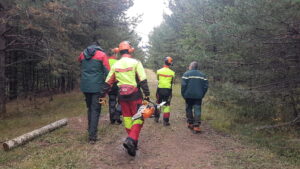Abstract/Description
Mountain forests are sharp ecotones characterised by climatic extremes in both temperature and precipitation that play a vital role in human communities both locally and across wider spatial scales through supply of ecosystem services. However, modern anthropogenic climate and environmental change is inducing rapid, complex shifts in mountain forest ecosystems. To break down and understand this complexity, we use the social-ecological system concept which considers the interplay between human and natural systems.
In this study, we aimed to capture dialogue, interactions and collaborations between stakeholders to explore current and future status of ecosystem services in mountain forests in response to changing climate and land management. To achieve this, we hosted an expert stakeholder workshop where we discussed current perceptions and future expectations of forest ecosystem services. The attendees of this event where a heterogenous group of experts from different parts of this system in Tirol, Austria.
Within the workshop and the follow-up survey, stakeholders identified and indicated the relative importance of ecosystem services, as well as their synergies and trade-offs. We used grounded theory methods to analyse workshop audio and written outputs. From our findings, we derived a conceptual model for adaptive pathways based on empirical data, as well as exploring opportunities and tipping points for mountain forest ecosystem service change. This research looks to build stakeholder knowledge and decision making into how future mountain forests will be used and managed.


